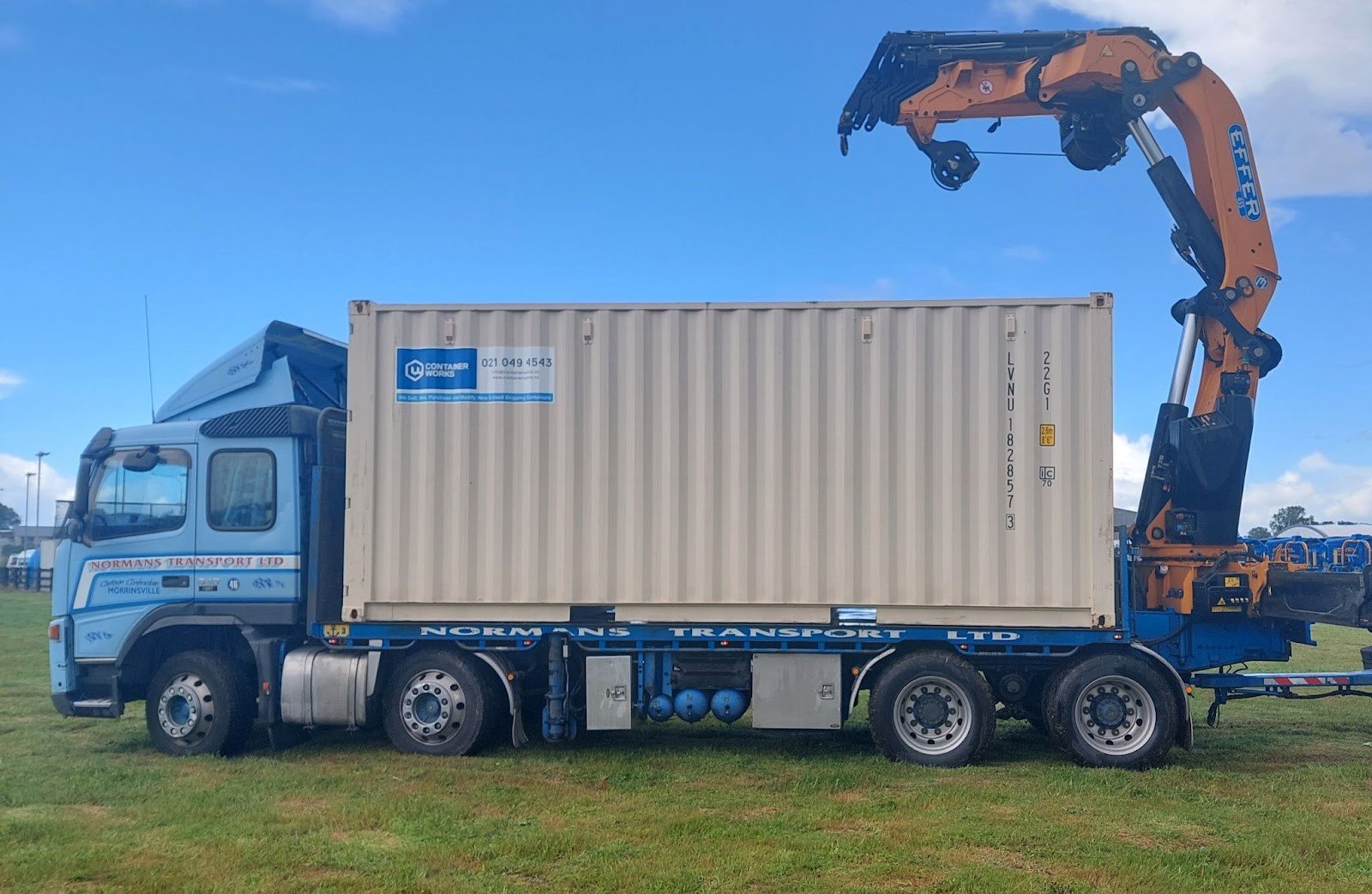Container Delivery and Placement: What You Need to Know
1. Site Prep:
Before the container arrives, it's important to work out where you want the container to be placed. Clear this area of any obstructions, debris, or potential hazards. Ensure the ground is level and stable to provide a secure foundation for the container. We recommend putting the container on H4 treated levelling blocks (one under each of the container’s 4 corners). Other common options are concrete blocks/pavers or railway sleepers. This allows for airflow underneath the container, provides a stable/level base and will discourage rodents or the like from nesting underneath.
2. Choosing the Right Location:
Selecting the optimal location for your container requires consideration. Take into account factors such as sunlight exposure, potential accessibility, proximity to utilities, and access. A well-chosen location will mean the container can be utilised effectively and reduces the likelihood of needing to have it shifted or repositioned.
3. Council Regulations
Depending on where you are based, you may need consent from local councils or authorities. Research and obtain the necessary permissions before the container's arrival to avoid any complications.
4. Access Considerations:
Container delivery involves large trucks and equipment. Ensure there's adequate space for the delivery truck to manoeuvre and place the container accurately. Consider factors like road or entry way width, turning radius, and any overhead obstacles.
Hiab’s and Swing Lifts require access clearance of 3m wide and 4.5m high of any trees, powerlines etc. Swinglifts and hiabs are 20 ton road going trucks so they require solid level ground with no tight bends/corners for delivery.


5. Delivery Day Logistics: Coordination is Key
On the day of delivery, coordinate with the delivery driver to guide them to your preferred spot for placement. Clear communication is essential to ensure your container is placed in your preferred position. It is a good idea to have levelling blocks or the position marked out, where you want your container placed.
6. Foundation and Anchoring:
It is wise to consider both the soil type and potential weather conditions in the area you are looking to place the container, depending on where you are placing the container to you may want to consider anchoring the container to the ground to prevent shifting in an extreme weather event.
If you are adequately prepared and have chosen an accessible/appropriate site then when it comes time for delivery and placement this will ensure that the process goes as smoothly as possible.

